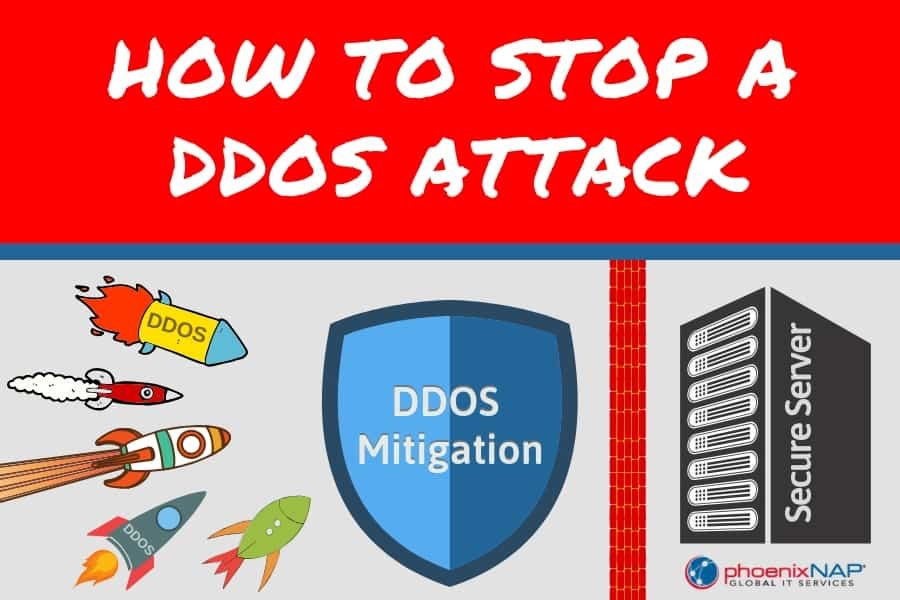
Learn how to quickly stop DDoS attacks in order to make your business grow fast. Because the effects of DDoS attacks can be devastating, DDOS attacks can make your business disappear from the Internet. Your company should do its utmost to prevent DDoS attacks and avoid affecting your company’s network.
The difference between DOS and DDOS attacks
A basic denial of service (DoS) attack involves attacking an IP address with a large amount of traffic. According to research of Network Experts If the IP address points to a web server, it (or its upstream router) may be overwhelmed. Legitimate traffic to the web server will not respond and the site will become unavailable and the service will be rejected.
Distributed Denial of Service (DDoS) is a special type of denial of service attack. The principle is the same, but malicious traffic is generated from multiple sources. Despite coordination from a central point. Traffic sources are distributed across the globe, making DDoS attacks more difficult to block than attacks from a single IP address.
DDoS attacks become more and more frequent
The number of DDOS attacks has increased year by year, and more and more insecure Internet of Things (IoT) devices have been infected and recruited into botnets. The amount of attacks issued by DDoS attack victims has also increased significantly, mainly due to amplification attacks such as NTP amplification attacks and DNS amplification attacks. Earlier this year, cybercriminals launched about 15,000 me cached attacks, including attacks on GitHub, which attacked an astonishing 1.35 Tbps.
Preventing DDoS attacks is almost impossible when a malicious attacker launches more than 1 Tbps of attack traffic on your server, which means that after a DDoS attack begins to affect your operations, it is more important than ever to block DDoS attacks. . Here are six tips for blocking DDoS attacks.
6 tips for defending against DDoS attacks
- Identify DDoS attacks as early as possible
If you run your own server, you need to be able to determine when it will be attacked. This is because you are sure that the problem with the website is due to a DDoS attack, and you will handle and stop the DDoS attack in a timely manner.
To do this, it’s a good idea to get familiar with your typical inbound traffic profile, and the more you know about normal traffic, the easier it is to see when its configuration file changes. Most DDoS attacks start with a sharp rise in traffic, and it is helpful to be able to distinguish between the sudden surge of legitimate visitors and the beginning of a DDoS attack. The company must have a dedicated DDoS attacker to handle it in time.
- Add more bandwidth
Typically, network servers have more bandwidth available than you might think. This way, you can handle sudden increases in traffic, but even if your bandwidth is increased by a factor of 100, you may not be able to block DDoS attacks. However, it can give you a few minutes of processing time before the bandwidth resource is fully used.
- Can be protected on the periphery of the network
Some technical measures can be taken to partially mitigate the impact of the attack, especially in the first few minutes, some of which are very simple. For example, you can do the following:
- Rate limits your router to prevent your web server from being overwhelmed by attacks
- Add a filter to tell your router to drop packets from obvious attack sources
- Discard spoofed or malformed packets
- Set lower SYN, ICMP and UDP flooding thresholds
But the truth is, although these steps have worked in the past, DDoS attacks are often too large to completely prevent DDoS attacks. What you can expect at most is that when DDoS attacks are upgraded, these methods will give you some time to deal with.
- Find a server provider to assist with processing
If your web server is in a hosting center, you are more likely to experience a DDoS attack than you would run it yourself. This is because its data center may have higher bandwidth links and higher capacity routers than the company, and its server providers may have more experience dealing with attacks. Putting your web server with a hosted server also keeps the DDoS traffic to your web server out of the company’s WAN.
If the DDoS attack is large enough, the first thing a server hosting provider might do is “empty routing” your traffic, which causes packets sent to your web server to be dropped before they arrive.
Hosting companies that allow DDoS to enter their network is very expensive because it consumes a lot of bandwidth and can affect other customers, so the first thing a server provider might do is route to a black hole for a while.
When the server provider sees the attacked client, the first thing to do is to log in to our router and prevent traffic from entering the network at the computer room. Using BGP (Border Gateway Protocol) to route routes overseas, traffic will then drop. ”
If this is the end of the story, the DDoS attack will still succeed. In order to bring the site back online, the server hosting company may clean your traffic and remove malicious packets before sending legitimate packets to your web server.
- Cooperate with companies that specialize in DDO attacks
For very large attacks, the best chance for you to stay online may be to use a professional DDoS mitigation company. These organizations have large-scale infrastructure and use a variety of technologies, including data cleaning, to help keep your website online. In order to deal with large attacks.
“If the customer needs to handle DDoS attacks, then the customer’s traffic will be transferred to (DDoS Mitigation Company). DDOS cleaning center can handle very high traffic and send the cleaned traffic to the intended destination. But this method the delay has increased, but it is not accessible.
- Create a DDoS attack processing plan
Cyber Security Services in Australia says that the best way to ensure that your organization reacts as quickly and efficiently as possible to prevent DDoS attacks is to create a DDOS attack processing plan that details each step of the pre-planned response when the attack is detected.
This should include the actions detailed above, as well as the contact name and phone number that may be responsible for handling DDOS attacks as part of the DDOS attack plan. DDoS Mitigation companies can help solve this problem by running simulated DDoS attacks, enabling you to develop and refine fast enterprise programs to deal with real attacks.
Tech content on this site may include contributed articles and partnerships with industry voices. Learn more in our Editorial Policy.




